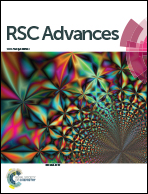Fabrication and properties of poly(ethylene chlorotrifluoroethylene) membranes via thermally induced phase separation (TIPS)
Abstract
Poly(ethylene chlorotrifluoroethylene) (ECTFE) porous membranes have been fabricated via thermally induced phase separation (TIPS). Dioctyl adipate (DOA) as the diluent, micro-scale SiO2 particles and a composite powder (composed of soluble and insoluble particles) as the additives were used in this study. The filtration performance of the prepared membranes was characterized in terms of pure water flux, porosity, mean pore size, water contact angle, mechanical strength, and ultrafiltration tests. The morphologies of the obtained membranes were observed by a scanning electron microscope (SEM). The results showed that ECTFE membranes were a kind of homogeneous membrane, the addition of SiO2 particles and the composite powder brought about interfacial microvoids (IFMs) and a dissolved pore structure. The porosity, pure water and protein solution fluxes decreased, while the rejection ratio and mechanical properties increased with the increase of polymer content. With the addition of additives, the ultrafiltration performance improved obviously. Moreover, the membranes showed good resistance to the aggressive chemical corrosive solutions.


 Please wait while we load your content...
Please wait while we load your content...